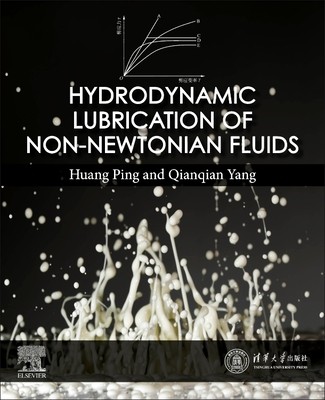
- We will send in 10–14 business days.
- Author: Ping Huang
- Publisher: Elsevier
- ISBN-10: 0323994776
- ISBN-13: 9780323994774
- Format: 19.1 x 23.5 x 1.8 cm, softcover
- Language: English
- SAVE -10% with code: EXTRA
Reviews
Description
Hydrodynamic Lubrication of Non-Newtonian Fluids covers basic theory, lubrication failure and numerical methods and procedures. The title offers a feasible method for solving the hydrodynamic lubrication problem for non-Newtonian fluids. Whereas hydrodynamic lubrication in Newtonian fluids can be solved using the existing Reynolds equation, hydrodynamic lubrication in non-Newtonian fluid is much more difficult to solve because the non-Newtonian constitutive equation is nonlinear. Engineers and technicians working on non-Newtonian fluid lubrication calculation and analysis will find this to be an invaluable reference on the latest thinking on hydrodynamic lubrication.
This book presents a unified solution to hydrodynamic lubrication in non-Newtonian fluids, proposing a flow separation method. In addition, the title gives methods and insights into viscosity in non-Newtonian fluids, the lubrication failure mechanism and fluid lubrication mechanism carrying capacity.
EXTRA 10 % discount with code: EXTRA
The promotion ends in 16d.10:30:31
The discount code is valid when purchasing from 10 €. Discounts do not stack.
- Author: Ping Huang
- Publisher: Elsevier
- ISBN-10: 0323994776
- ISBN-13: 9780323994774
- Format: 19.1 x 23.5 x 1.8 cm, softcover
- Language: English English
Hydrodynamic Lubrication of Non-Newtonian Fluids covers basic theory, lubrication failure and numerical methods and procedures. The title offers a feasible method for solving the hydrodynamic lubrication problem for non-Newtonian fluids. Whereas hydrodynamic lubrication in Newtonian fluids can be solved using the existing Reynolds equation, hydrodynamic lubrication in non-Newtonian fluid is much more difficult to solve because the non-Newtonian constitutive equation is nonlinear. Engineers and technicians working on non-Newtonian fluid lubrication calculation and analysis will find this to be an invaluable reference on the latest thinking on hydrodynamic lubrication.
This book presents a unified solution to hydrodynamic lubrication in non-Newtonian fluids, proposing a flow separation method. In addition, the title gives methods and insights into viscosity in non-Newtonian fluids, the lubrication failure mechanism and fluid lubrication mechanism carrying capacity.


Reviews